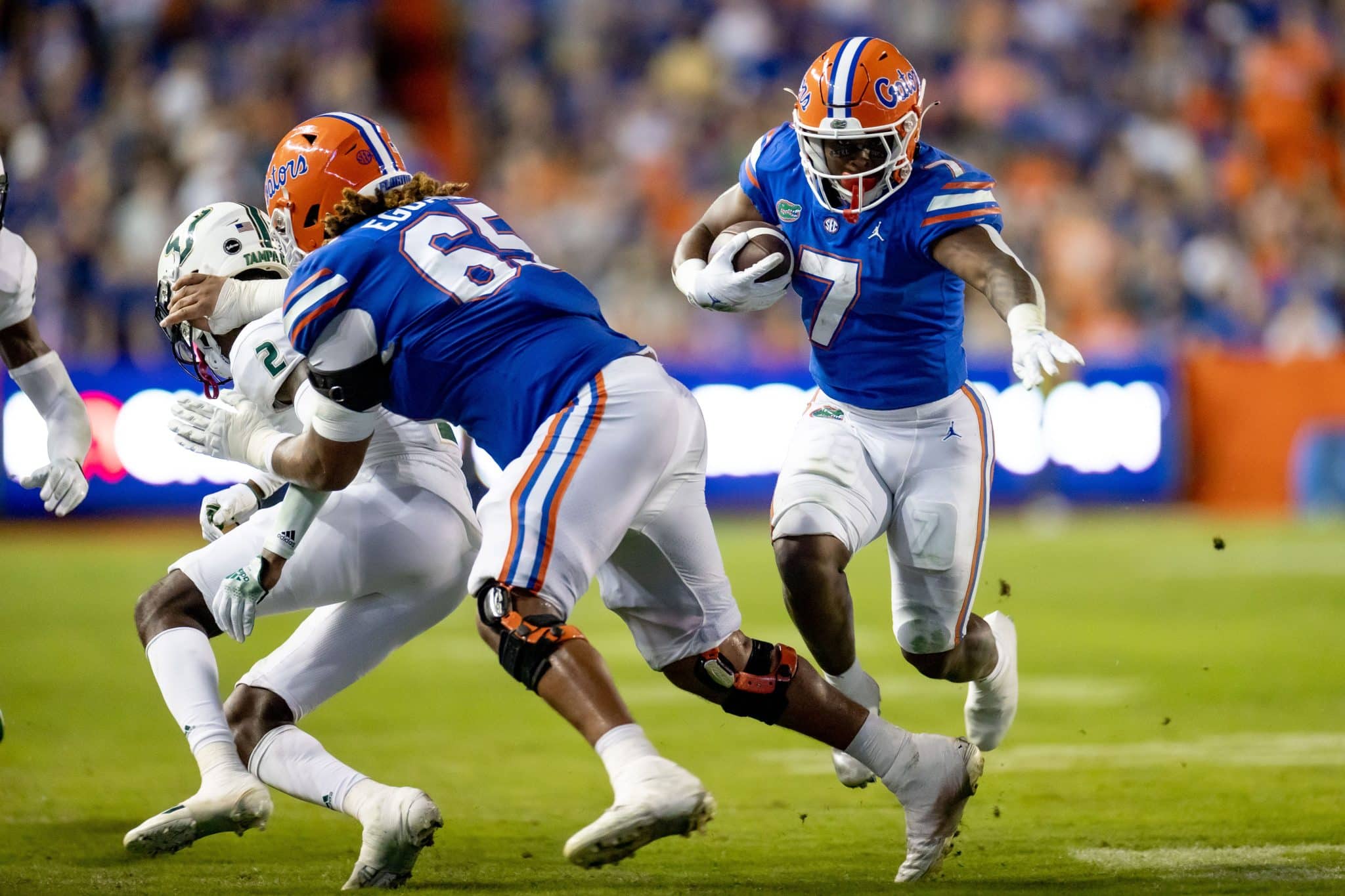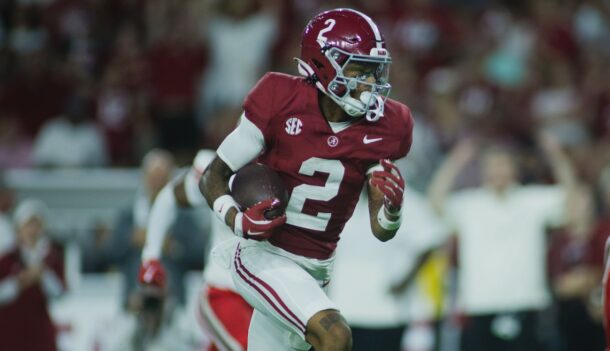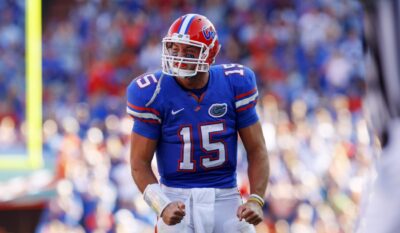
Florida needs answers on offense and they need them now.
After erupting for 451 yards at an efficient 7.2 yards per play clip in an opening week 29-26 win over No. 7 Utah, the Gators have struggled to move the ball with any consistency in games against then-No. 20 Kentucky and South Florida. The Gators gained just 279 yards (4.3 yards per play) against Kentucky and last Saturday night against South Florida, managed just 329 yards (6.9 yards per play) against a Bulls defense that surrendered a staggering 573 yards and 8.3 yards per play in their only game against Division I competition prior to playing the Gators.
After 4 seasons under Dan Mullen when Florida’s offense finished the season ranked no lower than 23rd in S&P offensive efficiency and twice finished in the top 10 in total offense, the scale of the downturn is surprising, especially given the fast start against a very good Utah team. Entering Saturday’s contest at No. 11 Tennessee (3:30 pm, CBS), the 2022 Gators rank a dismal 98th in total offense and 65th in yards gained per play. Florida has not thrown a touchdown pass this season, and its offense has generated more than 24 points just once (Utah).
21+ and present in NY, NJ, PA, CT, AZ, CO, IA, IL, IN, KS, KY, LA, MA, MD, MI, NC, NH, OH, OR, TN, VA, WV, WY. Gambling problem? Call 1-800-GAMBLER.
CLAIM OFFERYear 1 under Billy Napier was, at least among the rational, expected to be a hard road. The Gators had the nation’s most difficult September schedule and were rebuilding a culture and laying a foundation for the future after the rapid decline of the Mullen era, which saw him become the first coach in Division I history to go to 3 New Year’s 6/BCS bowls in his first 3 seasons, only to have a losing record and end up dismissed before the end of his 4th campaign.
Many of the problems that plagued the Mullen regime can’t be fixed overnight.
Florida must recruit better, and Mullen left behind very few, if any, perimeter playmakers for Napier to work with offensively.
The Gators also lack any legitimate depth at quarterback, or at least they have all September, thanks to an injury to Ohio State transfer (and former 4-star recruit) Jack Miller III.
Worst of all, Florida is breaking in a new quarterback — albeit one with first-round NFL talent — without any vertical threat to keep safeties at bay on defense. That means that the Gators’ offensive strength — the run game — is constantly facing defenses that don’t have to respect Florida’s ability to make explosive plays downfield.
Still, there are things Napier, who is the team’s play-caller and co-offensive coordinator (Rob Sale), can do to improve the offense now. Here are 5 things the Gators need to do more (or less) offensively, beginning Saturday at Tennessee.
Move the pocket for Anthony Richardson
Anthony Richardson is still learning as a passer. About that, there can no longer be any reasonable debate.
He is also the most dangerous athlete on any football field as a runner. About this, NFL scouts agree almost universally. As one scout told me before Florida’s game against Kentucky: “If he gets in the open field, there’s really not much of a precedent or comparison for that kind of size and speed. It’s a mismatch for anyone at any level.”
This begs the question: Why so many drop-back looks for Richardson this season?
Florida needs to move the pocket around for Richardson, giving him the option to run on almost any play. Play to his strength, first and foremost, rather than trying to pound a square peg of an electric athlete into a round hole of a pocket passer.
Moving Richardson’s pocket has 3 advantages. First, he’d have the option to run on any play. Second, it shortens the field of vision for him, eliminating the number of defenders he needs to account for as he reads a progression. That advantage is a huge reason many teams use rolling pockets for young quarterbacks. There’s an advantage to simplifying the game. Finally, it allows Richardson to improvise, which he’s proven adept at already in his short career.
Anthony Richardson is a cool, collected dude. Under heat and throws a 36-yard dart to Jacob Copeland pic.twitter.com/zsCeoRIHUW
— libgator (@lib_gator) September 11, 2021
Richardson starts the above play on a light roll to his left. When his protection breaks down, he steps up into the pocket, then rolls back out of it, drawing extra defenders against the run before delivering a strike to Jacob Copeland down the field. Richardson made a similar play to this at LSU last year, rolling left and throwing across his body to Copeland for a huge gain. Film study shows Richardson is comfortable throwing on the move, and reports out of his trips to the Manning Academy indicated he was the best quarterback in camp throwing on the move. There are simply too many reasons to move the pocket against keeping him stationary.
More called runs for Anthony Richardson
This is one my colleague Chris Wright nailed after the Kentucky game. Whatever and whomever you compare Richardson too, his strength right now is as a brilliant running quarterback. Why then, against Kentucky and South Florida, has Florida called just 7 run plays designed specifically for Richardson, after running 10 such plays in the opening night upset of Utah?
As Chris Wright wrote:
“Want some context?
“Cam Newton never threw 35 passes in a game in an Auburn uniform.
“Tim Tebow never threw 35 passes in a game in his sophomore season, you know, the Heisman season.
“Vince Young didn’t throw 35 passes in a game until his 22nd game at Texas.
“Dak Prescott only threw 35 passes in a game once in his first 32 games at Mississippi State.”
Again — Richardson doesn’t have to be any of these players. But like each of them, his skill-set is as a runner first, and a thrower second, at least for now.
The Tebow comparison is interesting because Tebow had exceptional vision as a runner and was the best short-yardage weapon in SEC history from an efficiency standpoint, converting an astonishing 81.1% of his called runs on 3rd- or 4th-and-2 or less, per the good people at Stats Solutions. For perspective, Cam Newton and Derrick Henry are second and third on this list since 2000, at 71.4% and 68.5%, respectively. Richardson lacks the power of Tebow, but has the size and is obviously faster.
Even if Florida spares Richardson the 15-20 carry games we saw from Newton or Tebow, Richardson should never have a game, like he did against Kentucky, where he attempts 29 more passes than runs. Even the USF game, where Richardson attempted 18 passes and ran just 4 called running plays, seems too heavy a balance toward throwing.
The Gators need to play assignment football and put a hat on defenses and let Richardson run the ball.
Get the running backs involved in the passing game
Florida isn’t electric down the field, as noted above.
But the Gators do have a handful of players who can make big-time plays in space. Most of them (almost all of them other than Richardson?) play running back. The three-headed running back room of Nay’Quan Wright, Trevor Etienne, and Montrell Johnson Jr. is as good as advertised, and the reason the Gators are 2-1 instead of 0-3 or 1-2. Another back, Lorenzo Lingard, is a capable pass catcher but has not seen the field, buried behind the other 3 backs on the depth chart.
To date, Florida’s running backs have not, oddly, been included in the passing game. Florida did try a slug (stop and go) concept to Nay’Quan Wright against Kentucky, but Richardson thought it was a curl and threw the ball to Kentucky’s Keidron Smith for 6 Wildcat points. Beyond that, the Gators have completed just 4 passes to their running backs this season. Wright’s talents in particular are damaged by this — he’s not as good between the tackles as Johnson Jr. or Etienne, but he entered the season with 34 career receptions, more than any returning running back in the SEC. Those 34 receptions? They included 12 explosive plays, a nice rate of return. Failing to utilize that strength is a mistake the Florida staff needs to correct.
This is all the more true because, as we’ll visit in the next section, Florida’s receivers have been poor.
It’s time to play the kids at wide receiver
We spent much of the summer writing about the lack of proven production at wide receiver entering the season. Mullen inherited a roster with current NFL receivers Freddie Swain Jr., Tyrie Cleveland and Van Jefferson and a future All-American and top 5 NFL Draft pick at tight end in Kyle Pitts. Credit Kyle Trask for getting the ball to those guys, but Jim McElwain left the Gators loaded at the receiver position. Florida’s talent has declined precipitously since those guys left for the NFL.
Florida has also been hurt by its failure to develop the likes of Copeland (transferred to Maryland) and Xzavier Henderson (mostly a possession receiver), high 4-star talents recruited by everyone in America, to this point.
That’s how you end up with a roster where Florida’s receivers catch just 7 of 14 targets against South Florida, and only Justin Shorter’s circus catch down the field constitutes a big play.
Florida’s inability under Mullen to recruit diverse talent types at wide receiver, as opposed to simply blue-chip talents, has hurt terribly. The Gators have a number of big, bulky receivers who can win a 50/50 ball, but no one who can take the top off a defense.
There are blue-chips like Daejon Reynolds, Ja’Quavion Fraziers and Marcus Burke who haven’t played much football yet. None are burners, and Burke, at 6-3 and about 200 pounds, is very much like Shorter, a possession receiver who can create a red-zone mismatch.
But at this point, Shorter and Henderson have caught 21 passes but gained just 188 yards in the process. Those numbers don’t justify playing every down, and sometimes, you never know what a player will do until you give him a chance in a game. It’s time to let Reynolds, Fraziars and Burke off their leash.
Lean on one of the best offensive lines in Florida history
Think this is hyperbole?
Think again: Florida is doing a weird thing 3 games into the season. They are grading out in the top 5 in the country as an offensive line unit, per Pro Football Focus, without playing elite offense.
Florida isn’t going to beat you over the top this year, so it is time to lean on Florida’s talented front and run the ball. Get the ball to Richardson, Etienne, Johnson and Wright as much as possible and let them go to work behind O’Cyrus Torrence (currently grading out as the best guard in college football) and a steady pair of tackles and just wear opposing defenses out.
This will also help the Gators shorten the game, giving them the best chance to limit the risk of playing a shootout, which for now, this offense is just not equipped to win.
Neil Blackmon covers Florida football and the SEC for SaturdayDownSouth.com. An attorney, he is also a member of the Football and Basketball Writers Associations of America. He also coaches basketball.







